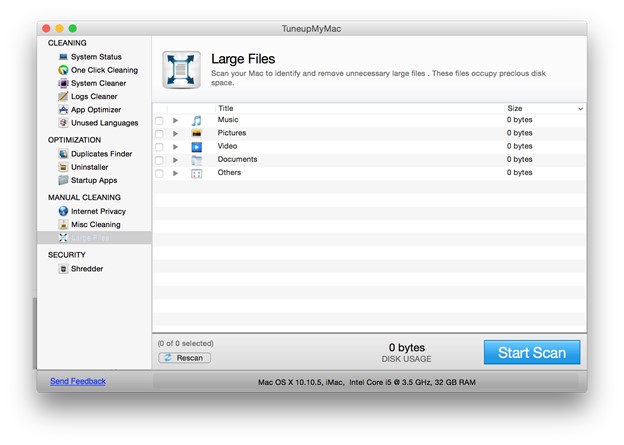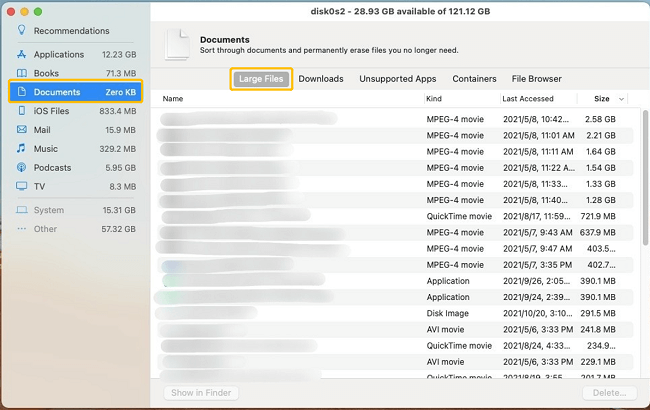
- #Find large files on mac how to#
- #Find large files on mac for mac#
- #Find large files on mac update#
- #Find large files on mac trial#
- #Find large files on mac mac#
#Find large files on mac mac#
So, you can’t directly view OLM file on Mac outlook, and there is no default OLM file location in Mac Outlook either. In Outlook or Mac, the mailbox data isn’t stored in one particular file, but rather, each mailbox item is stored separately. In Outlook for Windows, the mailbox data is stored locally in a PST or OST file, depending on your email account (IMAP, MAPI, or POP3).
#Find large files on mac trial#
While you can do so manually, it's really faster, safer, and easier to rely on apps such as CleanMyMac X and Disk Drill.īest of all, you can use CleanMyMac X and Disk Drill absolutely free for seven days through the trial of Setapp, a platform with more than 230 Mac and iOS apps for any task you can imagine, from tracking your personal finances with GreenBooks to creating GIFs with Gifox.Outlook is a popular email client, which is available for both Windows and Mac.

#Find large files on mac for mac#
#Find large files on mac how to#
CleanMyMac X knows how to avoid essential system files and only deletes things you don't need.
#Find large files on mac update#
With a few clicks you can get rid of junk, speed up all kinds of processes, fully uninstall and update apps, and even scan for malware. However, why not try to find a solution that would automate the whole process for you?ĬleanMyMac X is the world's most intuitive Mac optimizer.

Below, we'll show you a few better ways to find large files Mac drives store and get rid of them. The first thing everyone tries to do when they are running out of space is to open their Finder and click around until some files look heavy enough to make a difference when deleted.

How to quickly find large files on your Mac So how do you find large files macOS keeps hiding? Follow our guide and you'll never have to worry about running out of space again. photos, videos) accumulates, and even macOS keeps more and more cache files, user logs, etc. Apps tend to expand in size over time, media (e.g. No matter how much disk space you have on your Mac (which is also quite expensive), without a regular system for finding and removing old large files, you'll eventually run out. You're in the middle of something, and now you have to find big files that eat up disk space and delete them to avoid stalling your work. It always comes at the most inopportune time - the dreaded "Your disk is almost full" notification on Mac. Tackle your tasks with Setapp app suite solutions.


 0 kommentar(er)
0 kommentar(er)
